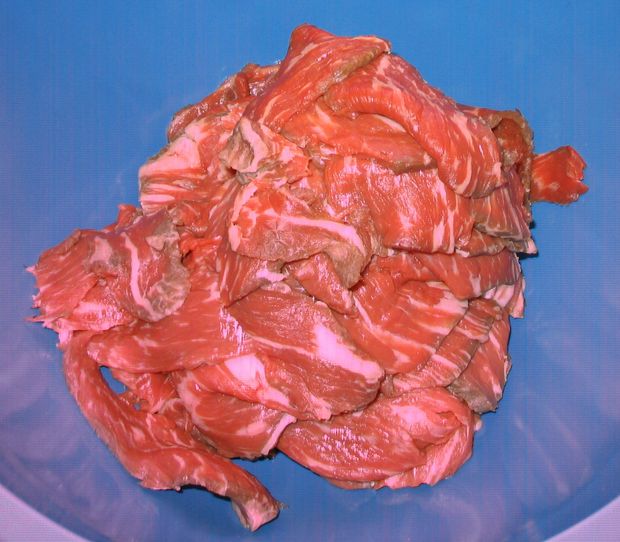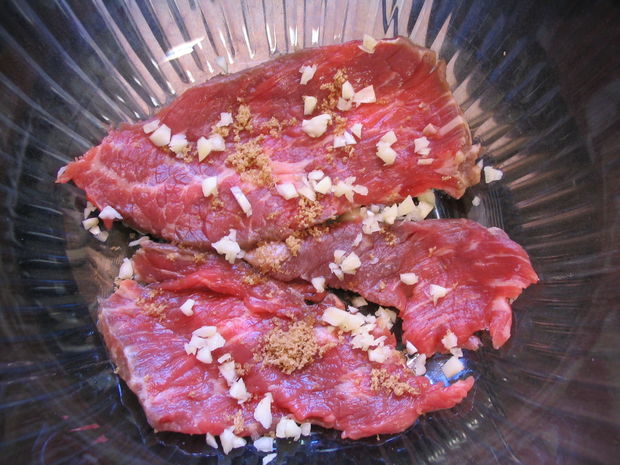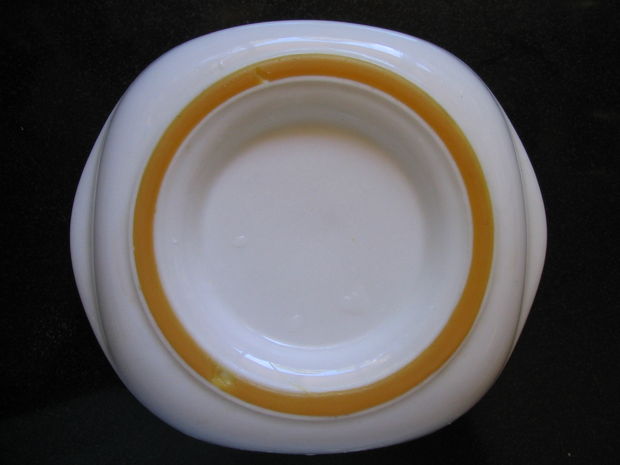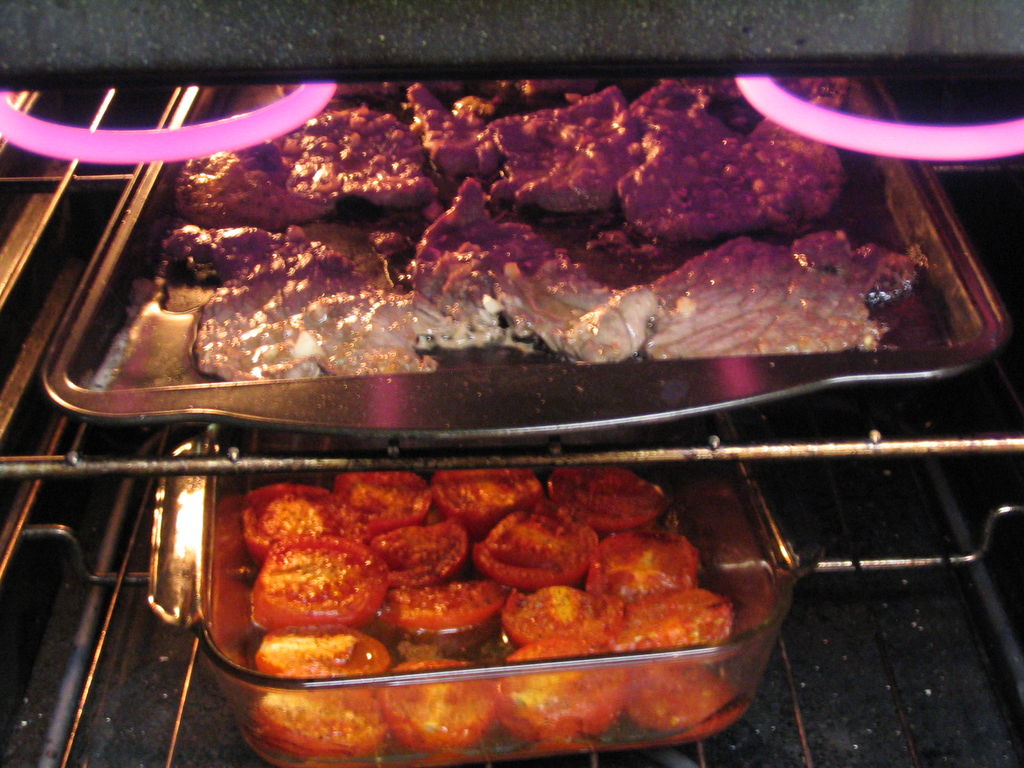Question ID: 4000-9452-0-1-2-4
Recipe Description
Get a nice big, SHARP knife, and cut the thinnest slices you can off of your hunk of meat, making sure to cut across the grain. (A good butcher can do this for you, but I don't always think that far ahead.)
Cutting the meat when it's well-chilled (or even frozen) helps to get nice even slices. Don't fret if you can't see through them; just do the best you can at cutting them thin.
The cut of meat you select isn't terribly important; just try to get a decently-sized cross section for your slices. I've also used bison roasts to good effect.
Acquire a suitable bowl or pan, preferably with a lid as you'll be leaving it in the refrigerator for a while.
Finely chop a large handful of garlic and place in a prep bowl. Fill another prep bowl with a couple of tablespoons of brown sugar.
Designate one hand for meat, and one hand for toppings. This should make cleaning up raw meat-contaminated things much easier.
Sprinkle the bottom of the bowl with a layer of garlic and sugar, then add a single layer of beef slices, making sure not to overlap.
Sprinkle with more sugar and garlic, then continue alternating layers of meat with sugar and garlic.
Place bowl in the refrigerator for at least one hour; overnight is fine as well.
One of the few Williams-Sonoma products worth the price is their ginger grater. I got mine about 10 years ago, so it's survived many years of heavy use. It is intelligently designed: there's a silicone foot to keep it from sliding around, and a moat to catch all of the ginger juice. Like all ceramic ginger graters, it magically comes clean under running water.While I love my Microplane zester for grating garlic and zesting citrus, it quickly gets clogged with ginger fibers. The ginger grater leaves you holding a nice little package of inedible ginger fibers when you're done grating, and won't get clogged. It grates garlic nicely, though doesn't manage to lyse as many cells as the Microplane.
Grate a knob of ginger and a couple of additional garlic cloves. Mix with soy sauce, rice vinegar, and sesame oil; here I've used a bit over 1/3c soy, brought the volume up to 1/2c with vinegar, and added about 1/2t of sesame oil.
Pour this mixture over the marinating meat and mix thoroughly. Return the meat to the refrigerator for at least 2 hours; overnight is also fine. Bonus points for mixing agin during marination.
Prepare your grilling area and implements. A proper charcoal or gas grill is preferable, but if you don't feel up to it your broiler will do the job admirably.
Load the meat onto a cookie sheet in a single layer, and place directly under the broiler on High. Keep a close eye on this until you get the hang of it, because these thin slices cook quickly. Don't bother with flipping the meat unless you really care. If you're using a real grill, again make sure to put the meat on in a single layer and pay close attention to avoid over-crispification.
Remove the meat when it's still moist and soft, but has begun to go crispy/carmelly at the tips and smells good.
The best reason NOT to cook bulgogi under the broiler is that it requires too many batches; a grill generally has more surface area. It's best not to stand on ceremony, and just eat the meat as soon as it's done.
I didn't get the chance to take a nice picture of the completed pile of meat because it all disappeared far too quickly. That's the first batch in the bowl, though; the vultures descended as I returned the baking sheet to the oven.
Question & Answer
Question: What is the correct order of the images?
Choices:
    |
| (A) |
    |
| (B) |
    |
| (C) |
    |
| (D) |
    |
|---|
 (A) (A) |